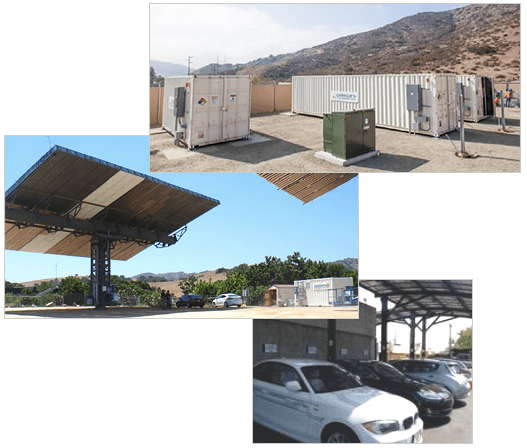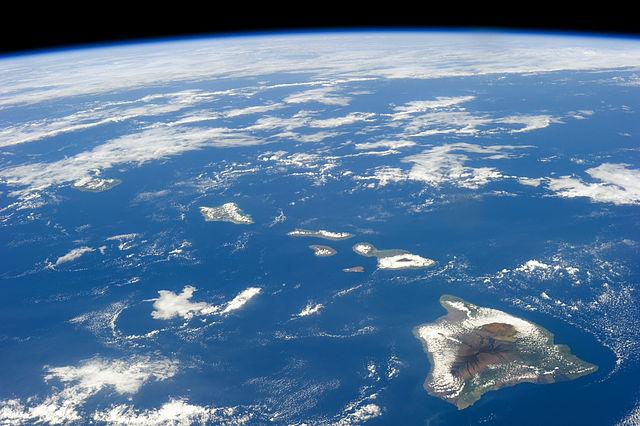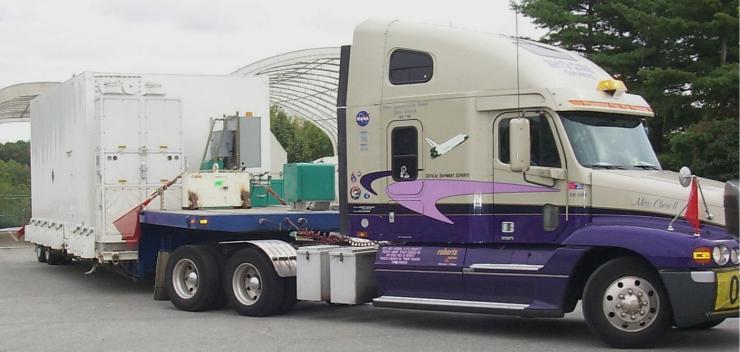2015 Set to be a “Breakout Year” for U.S. Energy Storage


State incentives and mandates, along with market and regulatory reform and ongoing technological advances, are coalescing and driving forward deployment of advanced energy solutions across the U.S. 2015 looks set to be a milestone year. Some 220 megawatts' (MWs) worth of energy storage capacity will be deployed across the nation in 2015 – more than three times more than that for 2014, according to an inaugural market research report from GTM Research and the Energy Storage Association (ESA). The organizations see growth continuing “at a rapid clip thereafter."
GTM and ESA's count of the number of grid-connected electrochemical and electromechanical storage installations that came on-line in 2014 totaled 61.9 MWs of power capacity, up 40 percent from 44.2 MWs in 2013. One leading smart distributed energy storage technology and market pioneer delivered over one-third the total.
The developer of grid-scale and customer-sited “behind the meter” energy storage software and solutions, Emeryville, CA's Greensmith is now using its fourth-generation GEMS platform to manage five advanced energy storage systems, “including the single largest battery-based power system deployed globally in 2014.” That system provides 24x7 frequency regulation services for an independent regional U.S. grid operator.
“On the cusp of a breakout year”
“The U.S. is on the cusp of a breakout year for energy storage,” according to the inaugural U.S. Energy Storage Monitor report .
Utility deployments dominated the fast emerging U.S. market for advanced energy storage systems in 2014, accounting for 90 percent of newly installed capacity. So-called “behind the meter” installations at utility customer sites – commercial and industrial companies, government facilities, schools, hospitals and municipalities – made up ten percent of 2014's total.
Installations of “behind the meter” advanced energy storage systems picked up sharply in 2014's fourth quarter (4Q), however, GTM and ESA note. Going forward, GTM expects “behind the meter” installations will account for 45 percent of the overall market by 2019.
Advanced energy storage system deployments are also concentrated in states that have and/or are in the process of instituting market regulatory reforms and supportive policies, including mandates and incentive programs. GTM and ESA single out California and states where PJM is responsible for grid operations and management– all or part of 13 states across the eastern U.S. and the District of Columbia – as early leaders.
“The U.S. energy storage market is nascent, but we expect it to pick up more speed this year,” GTM Research SVP Shayle Kann was quoted in a Greentech Media news report. “Attractive economics already exist across a broad array of applications, and system costs are in rapid decline. We expect some fits and starts but significant overall growth for the market in 2015.”A technology-agnostic approach in integrating distributed energy storage capacity
Based in Emeryville, CA, Greensmith is responsible for delivering fully one-third of the advanced energy storage capacity brought on-line across the U.S. in 2014. Greensmith's latest software platform, GEMS4, “was used to integrate and manage all five energy storage systems, totaling 23 megawatts,” the pioneering developer of distributed energy storage technology and solutions highlighted in a news release.
Agnostic when it comes to energy storage technology, GEMS4 integrated and is managing four new battery technologies, including lithium-ion (Li-ion), flow and aqueous-ion battery storage systems. In total, Greensmith has integrated 12 different types of batteries since its inception.
"We are pleased with yet another key milestone for the company, as the U.S. Energy Storage Monitor report confirms the significant growth taking place in the energy storage market – so the timing couldn't be better," Greensmith CEO John Jung was quoted as saying...[A] growing number of power producers, developers and utilities are relying on Greensmith to meet their energy storage technology needs, as reflected in our sales pipeline which currently exceeds 500 megawatts.
“There is no substitute for a track record of success when it comes to deploying any grid-scale technology so our customers value our experience delivering 45 systems across the country as well as internationally. It's gratifying to see that Greensmith is becoming a strategic partner of choice for the design, integration, and software control of advanced energy storage."
*Image credits: 1), 2) GTM Research, ESA; 3) Greensmith
Hawaii Close to Approving 100-Percent Renewables Goal


Hawaii is one of the more stunning corners of the world and receives millions of visitors annually: over 8 million arrivals alone in 2014. And those guests, along with the 1.4 million residents of the nation’s 50th state, use a lot of energy. Powering all those homes, business and, of course, resorts is pricey.
The state is heavily reliant on energy imports as it has no conventional energy resources of its own. While the continental 48 states use oil for less than 1 percent of their total power generation, Hawaii uses petroleum to meet 70 percent of its energy capacity. That is down from 81 percent in 2002, and oil consumption for the state’s grid is on a downward trajectory. But Hawaii’s leaders realize the perils of dependence on a volatile and dirty source of energy.
To that end, a bill that would require Hawaii to generate 100 percent of its energy needs from renewables by 2040 recently passed through committees in both branches of the state’s legislature.
Burlington, Vermont, became the first city in the U.S. to run entirely on clean energy. Can Hawaii do the same in 25 years?
Senate Bill 2181 follows up on Hawaii’s renewable energy portfolio standard that was established in 2009. The state has already made heavy investments in renewables, including wind, solar, geothermal and hydro. Hawaii’s utilities are on board: Hawaii Electric Light Co. has disclosed that, in 2012, clean energy accounted for 47 percent of its electricity sales. Maui Electric Co. reported its percentage as 21 percent for the same year. The state’s other two utilities are still in the single digits, but are boosting their portfolios. In fact, the Hawaii Electric Co. has stated that a 40-percent renewables goal by 2030 is entirely realistic. For now, the bulk of utility-scale electricity generation in Hawaii is generated by wind power — 42 percent in 2013. Solar, while still in its infancy, is catching on, especially in the residential market.
The bill has a strong chance of passing both houses of the state legislature this year, and appears to have the buy-in from newly elected Gov. David Ige, who during his primary campaign against his predecessor proposed his own general plan to reduce the state’s US$6 billion annual purchase of imported oil.
The devil of how Hawaii can achieve this goal, of course, is in the details. Burlington’s recent milestone, while impressive for a city of 50,000, attracted its fair share of criticism for relying on biomass, renewable energy credit purchases and hydropower. But setting such a goal can also drive innovation and investment — currently too much capital is leaving the state that could otherwise be put to use locally to build a more diverse economy. And with 25 percent of the state’s economy dependent on tourism, climate change risks and environmental protection have to be kept in mind if visitors will continue to come to Hawaii to enjoy the state’s spectacular landscape and natural beauty.
Image credit: NASA
Based in Fresno, California, Leon Kaye is a business writer and strategic communications specialist. He has also been featured in The Guardian, Clean Technica, Sustainable Brands, Earth911, Inhabitat, Architect Magazine and Wired.com. When he has time, he shares his thoughts on his own site, GreenGoPost.com. Follow him on Twitter and Instagram.
Challenge for the Sharing Economy: Become Better Middlemen


The discussion around the sharing economy seems to be narrowing these days, mainly to news related to a few large companies like Airbnb and Uber.
While it’s always interesting to read about the latest critique on Airbnb or on the Uberization of everything, today I want to look at a more general concept that is directly connected to the value created by the sharing economy – the middleman.
It is common to assume that the sharing economy creates value through peer-to-peer marketplaces that have no inefficient layers of middlemen. In a way, it is part of the premise of the sharing economy to create a profound social and economic shift. Rachel Botsman and Boo Rogers articulated it very clearly in their book “What's Mine Is Yours: The Rise of Collaborative Consumption.”
“In these highly successful 'marketplaces,' top-down mechanisms of 'command and control' have been removed, along with layers of permission, decision making and middlemen. In their place, peer-to-peer platforms enable decentralized, and transparent, communities to form and build 'trust between strangers,'” they wrote.
But, is this really the case today?
I got to think about it after reading Sophie-Charlotte Moatti’s piece “The Sharing Economy’s New Middlemen” in the Harvard Business Review. Moatti refers to a bunch of new companies like Breeze, YardClub, Pillow and ZenDrive, which mainly provide services to producers working in the sharing economy.
I don’t necessarily agree with Moatti that these new businesses are “entrepreneurial middlemen” – in my opinion, these startups are probably more of an add-on to the expanding ecosystem of the sharing economy than middlemen. However, it got me thinking what the development of these new businesses means for the sharing economy and the ways sharing creates value these days.
Sharing economy companies are indeed developers of peer-to-peer and business-to-peer marketplaces, “creating 'markets in sharing' by facilitating exchanges” and in some cases the use of underutilized resources. Still when you think, for example, about a company like Airbnb, what does "facilitating exchanges” actually mean?
I believe that for Airbnb, it meant at first a relatively ‘leaner’ role (not to say passive), focusing more on being an intermediary that supports the matching of hosts and guests and provides trust mechanisms required for the process, “essentially assuring that transactions are completed successfully.”
However, in time Airbnb’s role evolved into a more active one due to the complexity of the marketplace it created, which includes providing hosts with insurance, improving customer service, monitoring rentals and addressing users’ privacy needs.
This evolvement in its role as facilitator/intermediary/middleman isn’t unique to Airbnb and can be found in other sharing economy companies as well (Uber, Lyft, TaskRabbit, RelayRides and so on).
What we see is that the whole concept of removing the middleman in peer-to-peer markets doesn’t have merit. First, in some cases, like the one of Airbnb for example, the marketplace actually created an intermediary layer that wasn’t there before. After all, you used to receive a service directly from hotel – there was no middleman. Now, you receive a service from a host using the service of a middleman (aka Airbnb).
Second, sharing economy companies understood that to be truly successful they couldn’t leave all the work to the participants and hope that somehow the marketplace will function well and create mostly delightful experiences. This understanding got them to transform from a more passive back-office role into a more active one.
Sharing economy companies have learned that they need to perfect not just the user experience, but also their role as intermediaries. In the case of Airbnb it meant, for example, taking a greater part in monitoring suspicious transactions and removing providers and users that didn’t meet the standards from the platform, providing better customer service, ensuring some rights for the producers like minimum wage or benefits, and verifying information transferred by users via a third party.
Yet, apparently it’s not enough.
The rise of the startups described on the HBR blog article shows the complexity of the sharing economy and the challenges companies in this space face: They create value based on uniqueness, but they need more than that – for example, consistency to ensure repeatable delightful experiences on their platform.
It’s not easy when your value proposition is based on a network of tens or hundreds of thousands of service providers. “We used to live in a world where there are people … and where there are businesses. Now we live in a world where people can become businesses in 60 seconds. That’s a profound shift,” Airbnb co-founder and CEO Brian Chesky explains.
Chesky is right about the shift and that people can become service providers pretty quickly, but the real challenge is to make them good service providers. After all, not every person who has a spare room is a skillful entrepreneur. They need some assistance to become successful, and this is exactly where new startups like Pillow or Proprly get into the picture, providing hosts with services that help them create and capture value more effectively.
This is eventually good news for sharing economy companies, no matter if they also plan to offer these services or not, as these new startups could help them do a better job as value creators or, in other words, become better middlemen.
Image credit: Lynn Friedman, Flickr Creative Commons
Raz Godelnik is an Assistant Professor of Strategic Design and Management in the School of Design Strategies at Parsons The New School for Design. You can follow him on twitter @ecolibris
Love Free Shipping? Your Home Deliveries Burn 70 Gallons of Fuel a Year


Home delivery, which is often free with a minimal order, is sure convenient and beats having to jump in the car or change out of our pajamas to run those pesky errands. It is also a brilliant business model; anyone who has ordered on Amazon would agree as he or she gritted her teeth when they found they were a buck-fifty short of that US$35 free online shipping threshold. Of course, all those orders create their own impacts, from leaving a massive environmental footprint to the experience of workers toiling in those warehouses. Union of Concerned Scientists (UCS), for example, estimates that our addiction to home deliveries burns about 70 gallons of fuel annually per person.
To some of us here at Triple Pundit, that figure seems low—clearly if you are an Amazon Prime fiend, you are surely burning even more fuel. But considering that trucks are tasked with the bulk of shipping is in the United States, UCS insists more should be done to make trucks more energy efficient. According to the organization, the equivalent of 400,000 gallons of fuel a year is burned just to ship mobile phones across the U.S. If trucks could improve their mileage from what is now an average of six miles per gallon, the results would be huge fuel savings for the shipping of that newest smartphone.
UCS, therefore, is calling for even higher federal fuel efficiency rules for trucks. The U.S. adopted new standards in 2011, but UCS is calling for even higher standards this year as the 2011 rules will be implemented through 2018. These two new sets of standards could cut heavy trucks’ total fuel consumption by up to 40 percent.
Obviously the environmental benefits speak for themselves, but the financial rewards, insists UCS, are a smart business decision for individual truck drivers and managers of huge national fleets. Technologies and innovations already available, including new axle designs, improved aerodynamics, and updated engines and transmissions could save truck owners and drivers up to US$30,000 annually. In 10 years, such improvements would add about US$32,000 to the cost of a truck, but the costs of the upgrades would be recouped in 13 months.
Trucks, tractor-trailers and delivery vans have had little improvement in fuel economy since the 1970s, which is shocking considering both the advances in engineering as well as the surge in shipping to homes and businesses that have made it a daily routine for millions of Americans. Large road vehicles currently consume 25 percent of all transport fuel, but account for only seven percent of the vehicles on America’s highways and roads.
The numbers are overwhelming: shoes and diapers require 2 million gallons of fuel annually for shipment; beer almost 63 million gallons; and the movement of fuel itself burns 260 million gallons a year. The recent increase in gasoline and diesel prices show that the cost of fossil fuels will always be volatile; higher fuel standards, coupled with incentives to help independent truckers make those upgrades, will not only clean the air but keep our economy more secure in the long term.
Based in Fresno, California, Leon Kaye is a business writer and strategic communications specialist. He has also been featured in The Guardian, Clean Technica, Sustainable Brands, Earth911, Inhabitat, Architect Magazine and Wired.com. When he has time, he shares his thoughts on his own site, GreenGoPost.com. Follow him on Twitter and Instagram.
Image credit: Gbleem
Why Confidentiality Will Unlock the Impact Economy


Editor's Note: This post originally appeared on Unreasonable.is.
By Sara Olsen
As an impact accountant I have a unique vantage point into the inner-workings and health of the fledgling impact industry. Here’s one of its dirty secrets: At times, social enterprises aren’t doing any better for their intended beneficiaries than conventional businesses, and sometimes they even do harm.
When this happens, what should we do? Post a shaming video on Youtube? Call 20/20? Or work together to solve a problem that’s never been solved before, in an impact economy that’s admittedly still on training wheels?
My firm works closely with clients to measure social and environmental impact, with the goal of ensuring that results over time are what entrepreneurs and investors intend. Like a doctor or a lawyer, an impact accountant gets an inside look into social-impact ventures, which reveals valuable client data that should have confidentiality protection — like attorney-client privilege. Why? Because the fear social entrepreneurs and their funders face of negative PR or worse seems to tip the balance away from channeling their energy into fixing problems that inevitably arise, and toward minimizing or ignoring problems.
Here’s a theoretical example, based on a composite of our actual experiences over the past 19 years in the field:
Houston, we have a problem
Let’s call the startup Company X. On the surface, it is an online marketplace that connects consumer products made in emerging markets to buyers in the U.S. The company also aims to reduce economic exploitation of producers in emerging markets by sourcing materials from local agricultural producers and cutting out middlemen. By cutting them out, Company X increases its own visibility into the supply chain, decreases costs, pays local producers higher wages and supports the local community. The brand is savvy about consumer trends and sexy because of the impact story. All good, if the business can get momentum.
The founder of Company X spent time in a developing country wracked with economic deprivation and corruption, so he started Company X partly as a result of his personal experiences. His brilliance, creativity and hard work earned him a fantastic education and amazing contacts in the design, tech and venture capital worlds. And, like many social entrepreneurs, he has a terrific ability to put his own needs aside and to sniff out sources of support.
Even though Company X is barely a couple of years old, the entrepreneur finds a funder to sponsor the hiring of my impact accounting firm, SVT Group, to help develop impact metrics and reporting practices for Company X. Let’s call this funder the Foundation for Good Intentions (FGI).
Everything sounds pretty good so far, right? As part of our work, SVT Group goes into the field for stakeholder interviews, a classic step in the development of social impact metrics. We discover that, although most of the producer groups Company X is sourcing from are well run, there is one where the producers say they are paid much less than Company X thinks they are being paid. We aren’t sure, but we suspect a local manager (who could not be reached for an interview despite having known well in advance that we would be there) may be siphoning part of the compensation intended for the producers, leaving them in an unfair and vulnerable position.
This poses a direct threat to both Company X’s mission and brand, so we include this finding in our confidential report to Company X, along with corrective action in our recommendations.
Although the entrepreneur is interested in our findings and shares them with FGI, he is deeply dismayed and somewhat incredulous because he's had a longtime relationship with the manager who could potentially be pocketing the missing money.
He promises us he will attend to the matter, but we are candidly concerned that action will not be taken for several months since the U.S.-based entrepreneur feels as though he needs to go in person to handle it and won’t be on-site for over six months. While we understand his sentiment, months seems like a long time — especially for the producers.
We know that if FGI talks promptly with Company X’s founder about his action plan, that alone could make it a higher priority for him to address the issue. Likewise, if any of Company X’s board members were to ask to see the report and inquire how the entrepreneur is taking action, this could also spur him to debug the issue more quickly. But without that oversight, it is likely that the entrepreneur — striving to achieve enough momentum to break even and working with very limited resources — may let it slide … potentially indefinitely.
What do you think happens?
Strikingly, FGI never says anything about these recommendations to Company X’s founder. We are not sure that they even read the report. Six months later, to our knowledge, the entrepreneur has changed none of his practices.
Foundations of a healthy social impact ecosystem
For a social impact venture to avoid the risk of creating the very harm it strives to correct — taking its brand and investors’ capital down with it — the information ecosystem it sits within needs these six building blocks:
- Impact Purpose: The entrepreneur is sensitized to a social issue, and committed to addressing it through the enterprise.
- Impact Design: The enterprise’s business model and mission is designed to address that issue.
- Measurement Methods: Practical measurement methods exist that gauge the venture’s material social and environmental outcomes, including unintended ones.
- Measurement Investment: The finance community both asks for, and provides funding for, an “impact accounting system” to ensure that the social mission will be monitored and managed.
- Measurement Capability: The enterprise sets up and maintains its “impact books,” that is, ensures metrics and data management practices are in place that can meaningfully gauge the venture’s material social/environmental outcomes over time.
- Impact Accountability: Investors, donors, their fiduciaries, and senior management require reporting on appropriate metrics, and actively ensure that social performance, including any problems, is being managed.
If any one of these is absent, it can unravel the venture’s impact, despite plenty of good intentions all around. In Company’s X’s case, the sixth element — accountability, perhaps the very most essential one — is missing.
To be clear, the issue is not that a company is potentially harming its beneficiary; it’s that management needs the support and involvement of boards and funders to address impact problems. The entire burden can not be left to fall on the entrepreneur’s shoulders alone.
In Company X’s case, a lack of accountability for impact can cause a chain reaction where insensitivity to vulnerable producers becomes ingrained in the habits of the company from the ground up, leading to pockets of economic exploitation that eat away at the mission, the promise of social entrepreneurship and impact investing itself. And, tragically, the only factor differentiating Company X from mainstream multibillion-dollar corporations — its social impact — is lost.
Embrace the pain
So, how can professional privilege solve this problem? I’m not just talking about confidentiality agreements, which are de rigueur. I’m talking about a privilege afforded to the impact accounting profession and enshrined as a right in law, the way the legal and medical professions have. Social enterprises and their funders don’t know that they can get help identifying and tracking what is really going on with their impact without running the risk that the mere act of discovering a negative impact would bring all sorts of liability and negative PR. If they had protection to discover and disclose the facts with a professional, they would develop a more mature capacity to account for, manage and improve impact.
The lack of protected space for discovering and addressing negative impact issues has created a developmental delay in impact management. In far too many cases, instead of objective identification of issues and solution-based interactions, there is (often willfully) ignorant perpetuation of situations that are potentially the same or worse than the (non-“impact”) status quo. This is punctuated by periodic scandalous exposés in which the entrepreneur is accused of moral turpitude, funders and customers are implicitly made suckers for hollow marketing ploys, and would-be beneficiaries are left to their tragic fates.
Developmental delay is often the product of trauma. In this case, it may stem from a deep-seated fear of criticism of good works and those who fund them —and that has prevented what isn’t working from being surfaced and addressed.
A dozen years ago, I collaborated with a foundation executive director and long-time Council on Foundations member, who championed the council's creation of an ombudsperson role for nonprofits to anonymously voice problems they experienced in their interactions with foundations. The overwhelming sentiment his idea had met with was fear, and it went nowhere. He said foundations weren’t afraid they’d lose their tax-exempt status, or that Congress would step in to provide unwanted oversight of philanthropic activity. They were simply too afraid of unleashing a floodgate of negative feedback from their nonprofit counterparts. “They just didn’t want to open that door,” he said.
This is gradually changing thanks to the brave efforts of many philanthropic leaders. But the sentiment still runs deep and has set a precedent for impact investors, who may view regular impact reporting and management as optional. For impact investing to scale, this sentiment must change radically faster.
My hunch is that things aren’t as bad as the philanthropic community worries they might be. All these years in the dark have bred a kind of neurosis about criticism that I think is highly exaggerated. Confidentiality protection as a practice standard would help free us to discover the true nature of things.
Privilege should be a right
Just as there is professional privilege in law and psychology, we need clear guidelines for how negative information can be shared, discussed and addressed confidentially by enterprises with their impact measurement advisors.
The nature of the risk involved in both impact investing and philanthropy, and what it takes to improve our impact, will both be illuminated by creating a safe space in which to find out what isn’t working.
In the case of Company X, the easy thing to do is to lay the problem at the feet of the entrepreneur, or to say that the Foundation for Good Intentions should have taken more of an interest. But the problem is bigger than either of them, and the fate of the impact economy cannot rest on the perfection of each and every social entrepreneur.
Professional privilege rules urgently need to be defined for the social impact industry so that executive teams and their boards and investors can be encouraged to discover and address problems—and get better at solving them. The growth of the impact economy, and all its promised benefits, demands it.
Image credit: Flickr/Hilary Dotson
Sara is the founder of SVT Group, a social and environmental accounting and management firm, and the co-founder of the GSVC. She has led the design of customized systems that today reveal the impact of over $4.7Bn in 70+ countries and numerous industries including reforestation, green technology, sustainable agriculture, maternal and child health, education and community economic development.
5 Trends Shaping the Future of the Workplace


By Bruno Gardner
Following a dip during the financial crisis, sustainability is climbing back up the corporate agenda. Volatile energy costs, a shrinking security of supply, new environmental regulations and growing consumer awareness are combining to make a compelling business case for action.
In the past, sustainability was seen by some businesses as a means of achieving differentiation or a better reputation, but it will soon be seen by all as a core business necessity.
The implications will be widespread and will affect all areas of business, including workplaces and working practices. New offices are being built to high efficiency standards, and existing building stock is being retrofitted with sustainability in mind. Perhaps more importantly, an increasing number of organizations are putting robust procedures in place to ensure they operate their buildings as efficiently as possible.
At the same time, advances in information and communications technology continue to allow new, more flexible ways of working. While sustainability is not always the main driver behind these innovations, it can be an attractive side-benefit.
The practical question many businesses are now grappling with is: What will sustainability mean for me and my workforce? In some ways, the answer is not much, because sustainability often means doing the same as before but more efficiently. But in other ways, improving sustainability could result in significant changes to business operations and management processes.
The Carbon Trust has identified five potential changes to workplaces and working practices with sustainability benefits. Each has varying likelihoods and levels of disruption.
1. Energy efficient equipment will become the norm
Likelihood: HighDisruption: Low
The business case for energy-efficient lighting, heating and other equipment is already strong. As energy prices continue to rise and equipment performance continues to improve, it will only get stronger.
Government regulations and incentive schemes are encouraging businesses to better understand how they become energy efficient, as well as helping them to realize those opportunities. The combined impact of rising energy prices and government action means that high-performing energy-efficient equipment will soon become the default choice for all businesses.
This accelerated uptake of energy-efficient equipment will only have a minimal impact on the workforce, however. For the most part, the purpose of this equipment is simply to perform the same task more efficiently, so the disruption to workers will be limited.
2. Offices will become smarter
Likelihood: HighDisruption: Low
Office buildings of the future will not only be more energy and resource efficient than today’s buildings, but they will also be smarter. Buildings will use sensors and control systems to adapt to changing weather conditions and occupancy levels in real time.
This will take place as part of a wider move towards integrated smart city networks that continually monitor and optimize energy supply and demand across a city. The practical result of this is that lighting, heating, cooling and ventilation will be maintained at optimum levels at all times, resulting in the win-win outcome of lower energy consumption and better working conditions.
As with energy efficient equipment, smart technology won’t necessarily be particularly noticed by employees, but will help to create a more comfortable working environment with better lighting and thermal comfort, both of which can contribute to improved productivity.
3. Occupancy levels will rise
Likelihood: HighDisruption: Low
One of the easiest ways for businesses to become more energy efficient is to occupy their offices more densely. This can be achieved through a variety of methods, such as open plan hot-desking areas. The privacy of a corner office will soon become a thing of the past.
This may result in individual buildings’ energy consumption rising, but consumption per employee and therefore overall businesses’ energy consumption will fall. Done well, there is no reason why more densely occupied offices should be less pleasant working environments, especially when combined with flexible working practices.
This approach offers businesses a longer-term opportunity to save money on commercial property and reduce business rates. There is, however, a need to consider how it will impact on team and management structures. Management expectations and targets could become more focused on output rather than process, helping to overcome the perception that staff are less productive outside the workplace. Similarly new methods of building team culture through virtual interaction may need to replace the bonding that takes place at the water cooler and coffee machine.
4. Working practices will become more flexible
Likelihood: MediumDisruption: Medium
We've heard grand pronouncements about the rise of the virtual office for years now, but most people spend the majority of their time working as if they were still chained to desk phones, filing cabinets and fax machines. According to the TUC, only 62,000 additional people worked from home regularly in the U.K. over the past year, with the rate of growth only just above the overall rise in employment.
That said, there’s no doubt that communications technologies are enabling many employees to take a more flexible approach to working. There is every indication that this trend is set to continue as broadband and mobile Internet get faster and more accessible, and more data and systems are hosted in the cloud.
In general, homeworking provides both environmental and cost-saving benefits for organizations when well-implemented. It has a particularly strong impact where employees commute by car and where there is the potential to rationalize office space. However, it should be noted that in some circumstances, particularly where offices are energy- and space-efficient and where staff generally commute by public transport (for example in central London), home-working could actually lead to an overall increase in carbon emissions. It is therefore vital to examine the specific situation of a business and its employees in order to properly understand the potential impacts.
5. Businesses may relocate
Likelihood: LowDisruption: High
In some extreme cases the direct impacts of climate change, such as rising sea levels, will mean that some businesses will have no choice but to relocate. The impacts are likely to be relatively small within the U.K. But according to a recent report backed by a number of U.S. economic heavyweights, including Michael Bloomberg and Hank Paulson, between $66 billion and $106 billion worth of existing U.S. coastal property could be below sea level by 2050, with the greatest impact on the Atlantic and Southeast coasts.
In other cases, businesses may find that changing city landscapes, new low-carbon infrastructure and new working practices mean that there is a strong business case to relocate. This could involve moving to more energy-efficient premises, closer to cheaper or more reliable energy sources, or nearer to public transport hubs. Businesses may also find that increased flexible working practices weaken the case for large and expensive center-city offices.
The changes to workplaces and working practices driven by improved energy efficiency and sustainability will be overwhelmingly positive. Buildings will generate fewer emissions, businesses will save money and staff will benefit from improved working conditions. Not everything will be driven by a concern for the environment, but the possibilities opened up by new technologies mean that doing better as a business will frequently do better for the planet at the same time.
Image courtesy of the Carbon Trust
Bruno Gardner heads up the Carbon Trust’s involvement in Low Carbon Workplace, a property development partnership between the Carbon Trust, asset manager Threadneedle and developer Stanhope. His areas of expertise include sustainable buildings, energy efficiency and carbon impact assessment. Before joining the Carbon Trust, Bruno worked as a strategy consultant for McKinsey, having previously held a range of commercial, strategic and operational roles with ExxonMobil and Barclays. Bruno holds a Master’s degree in Mechanical Engineering and an MBA.
SVN 'Best Advice’ Series: Never Stop


Join Social Venture Network for the 2015 SVN Spring Conference, April 16-19, in San Diego. The event is open to active members, affiliates, family members and first-time prospective members. Click here to register.
As a lead-up to the conference, SVN is sharing best business practices from its members in a series of short video clips. Follow the series here.
By Social Venture Network
SVN members have launched some of the most innovative organizations in the mission-driven business community. They’ve experienced success, failure, setbacks and breakthroughs … and are very candid about the lessons they learned the hard way.
In this video, SVN member Cheryl Contee, CEO and co-founder of Fission Strategy, shares the difficulties of getting funding as a female founder of a tech company. She also speaks to how having the confidence to overcome anything that stands in your way can help you become a successful entrepreneur.
For more business advice from SVN members, check out “The Best Advice I Never Got” here.
Image and video courtesy of Social Venture Network.
Ontario Launches Fund to Foster Social Enterprises


By Stephen Thompson
Doing well by doing good is an art form – and it’s one that’s attracting increasing interest and investment from the private sector. Investors and entrepreneurs alike are showing a growing interest in social enterprise investing, making this field a remarkable new opportunity for prosperity on a global basis. But it doesn’t happen overnight, or without government support.
It’s not altruism that drives governments to support these groups; wide-ranging benefits are well-documented. Organizations that achieve both financial goals and social, environmental and economic change contribute to the creation of more jobs, a healthier community and ultimately a stronger economy.
The good news: Increasingly, the public and private sector are working together to open the door by connecting capital to the greater good.
Making it work: Funding social enterprise investors
Policy development that works hand-in-hand with private-sector investors holds the key to shaping a social enterprise-friendly economy. And yet, access to capital is the No. 1 issue of concern limiting growth, according to surveys of social enterprise leaders.
With that in mind, the province of Ontario, Canada recently launched the Social Enterprise Demonstration Fund (SEDF) to foster the growth of social entrepreneurs and enterprises who are tackling Ontario's most pressing social and environmental issues -- and creating jobs.
Rather than funding social enterprises directly, SEDF will contribute CAD$4 million to 11 social finance organizations across the province at up to $500,000 each. Each participating regional organization is, in turn, leveraging the province’s funding to raise additional capital from other sources, including banks and private investors, on a minimum 1:1 matching basis. The capital pools created will then enable micro-loans and grants to early-stage social enterprises.
The province’s CAD$4 million SEDF contribution has so far leveraged CAD$6 million in private capital from partners such as the TD Bank Group and the Rotman Family Foundation. The SEDF is a key component of Ontario’s social enterprise strategy to create 1,600 new jobs — particularly for traditionally disadvantaged populations such as at-risk youth, new Canadians and Aboriginal people.
Aligning the players
For this first round of SEDF funding, Ontario selected 11 organizations from a sea of promising candidates based on such factors as potential for maximum economic impact, job creation and inclusion of disadvantaged people. These intermediary organizations were selected for their ability to identify and fund smaller, newer ventures.
PARO Centre for Women’s Enterprise, for example, helps social entrepreneurs who are women access financing and training. RISE Asset Development provides low-interest small business loans, training and mentorship to social entrepreneurs who cannot access traditional financing, specifically individuals with a history of mental health or addictions challenges or experience in the criminal justice system.
By allotting public funding to social enterprises, we can empower citizens to contribute in a positive way, ultimately help reduce poverty, improve the environment, create positive social change — and economic growth. With the right partnerships and a long-term commitment to program success, a social enterprise-friendly economy will result in business strategies that drive social, environmental and economic change for a real triple-bottom-line win.
New strategies for old challenges
But one fund alone does not shape a social enterprise-friendly economic environment. SEDF is Ontario’s latest initiative in a far-reaching Social Enterprise Strategy to build the social enterprise sector. Already, Ontario is home to approximately 10,000 social enterprises employing an estimated 160,000 people and serving roughly 3.4 million customers each year. The province is testing multiple approaches to foster this valuable economic sector. A new generation of entrepreneurs, investors and policy-makers is making it possible to make a difference and a solid return on investment.
Globally, the social finance market is expected to generate up to $1 trillion in new impact investment capital over the next 10 years. But 10 years is a long time to wait for innovative ideas to come to fruition when we need the impact now.
Enter the combined power of public and private collaboration. In a Triple Pundit post last year, we discussed the launch of Ontario’s Social Venture Connexion (SVX.ca), a venue for connecting social entrepreneurs with investors.Through a collaboration with several partners in the San Francisco Bay Area, the SVX platform has since expanded its reach into California, and will soon be expanding into Mexico.
Other elements of the Social Enterprise Strategy include social impact bonds, the Ontario Catapult Microloan Fund and Social Enterprise Ontario, a one-window resource website.
For more information, check out @InvestOntario on Twitter.
Stephen Thompson is the Senior Economic Officer in Ontario, Canada’s International Marketing Centre, San Francisco. He has served in numerous economic development leadership roles. The government of Ontario works with partners in the private sector and across society to grow Ontario’s economy, create jobs and increase prosperity.
Radical Transformation in Business and Beyond


By Giles Hutchins
There is a profound shift underway in our cultural story, sense of purpose and organizational logic. Deep and complex influences within our own psyche, our collective consciousness and in the structures pervading organizations are being challenged to radically reshape. At its heart, this paradigm shift challenges the very way we view the world and ourselves. It has the potential to change everything, and can be summarized as a shift from separateness to sacredness.
The indigenous elders of Peru explain the complete cycle of humanity as going through three movements: time of creation, time of conservation and time of renewal. The big change happens in the time of renewal, which the wise elders say is upon us now. Fundamental to this is a radical change in perception – a shift in conscious awareness – which affects how we attend to life, how we be, do and become. This time of renewal we find ourselves in can be very upsetting and painful while also profoundly liberating, as we free ourselves from old mental constructs, regulations and habits that keep us imprisoned in the status quo.
"I used to think that top environmental problems were biodiversity loss, ecosystem collapse and climate change. I thought that thirty years of good science could address these problems. I was wrong. The top environmental problems are selfishness, greed and apathy, and to deal with these we need a cultural and spiritual transformation." — Gus Speth, U.S. Advisor on climate change
This time of renewal is the time to allow new springs of civilization to flow. Yet the threshold from the death of old ways to reconfiguration and renewal can seem like a scary chasm, especially when we are all too engrossed in frantically patching up the current way of doing things to meet the ever-rising bills and debts. There is inherent inertia in crossing the threshold. Our feelings of security in the known and sense of safety in numbers by staying in the herd keep us fearfully clinging to old ways.
It is easy to become inured and institutionalized by the status quo and hard to break through beyond. And so the biggest challenge facing humanity is not climate change, consumerism or capitalism but our own ingrained mindsets, behaviors and beliefs -- and our ability to overcome them. The future depends not on techno-fixes but on our ability as leaders, change agents, employers, employees, neighbors, family members and friends to become aware of our true nature and sense of purpose in this world -- in other words, to become deeply aware of who we are and what we are here for.
"The new systemic understanding of life that has been developed at the forefront of science comprises biological, cognative, social and ecological dimensions. It applies to all living systems – individual organisms, social systems and ecosystems. Hence, it is relevant to virtually all professions and endevours." – Fritjof Capra
As the Chinese Zen master Huai-Chin Nan insightful said: "There's only one issue in the world. It's the reintegration of mind and matter." Upon our remembering the sacred sentience of life and the consciousness (or mind) flowing through everything and every moment, we perceive the world afresh with an ecological awareness. This awareness is not simply an intellectual comprehension of our holistic inter-relatedness but a lived experience and daily embodiment of this inter-relatedness: an awareness that pervades how we relate. This is to wake up to our true nature as conscious beings who are actively participating within a conscious, co-creative world. It is an awareness that is before our very noses, so close that it is like looking for our glasses, not seeing they are right on our face.
We are living through a supreme moment of our evolution of consciousness. The old worldview has had its day. This was a worldview of organizations, societies and individuals perceived as competitive self-maximizing units embroiled in an evolutional process of selfish ascendency where we either dominate or become dominated. The emerging worldview perceives a deeper inter-relatedness beyond the narrowing-down lens of our alienating ego-consciousness (and left-brained reductionism). This new worldview opens us up to an ecological consciousness (of head, heart and hand ‘bodymind’ awareness), which perceives the nature of our selves immersed within a sentient sea of entwined mind and matter.
It is our forgotten sense of the sacred sentience of life that underlies all of our current crises. Deal with this and you deal with causes (materialism and anthropocentrism) and their downstream effects (social, environmental and economic degradation). And there are many people actively involved in helping this transformation in consciousness take root (for more on this see The Future of Business article on TriplePundit). This sacred vision and deeper way of relating is not some luxury add-on which can be dispensed with in times of economic strife: It is foundational to who we truly are; without it we become rudderless, tossed this way and that by inauthentic, egotistic whims – distracted, dis-eased and deluded. Enter the contagion of consumerism in our midst.
The Paradigm Shift
Dominator > Participatory
Narcissistic > Empathic
Materialistic > Soulful
Ego as master > Ego as assistant
Patriarchy > Reciprocity
Separation > Inclusion
We can realize this sacred vision of the world through our joyful attunement of our body and environment. By letting go of habituations and narrowing-down constrictions in our minds, we create space for a deeper awareness of life beyond the illusion of separation to radiate through us. After all, it’s our true nature and, when activated, it feels like a homecoming.
It is through our deepening awareness that we begin to realize the truth of the poet William Blake’s words, "Everything that lives is holy." And through our awareness of what is in this present moment of life, we realize this holiness. This is our beginning. From here we can breathe into the new paradigm of reverence and respect, becoming all that we truly are in this enchanting and deeply wise world.
Giles Hutchins applies twenty years business experience to the emergence of new business logic inspired and in harmony with nature, for a short video see here.
A special for readers – a 20 percent discount code AF1014 when ordering “The Illusion of Separation” paperback here and the ebook here.
Giles blogs at The Nature of Business and The Nature of Business Facebook community. Find him on Twitter at @gileshutchins.
Pearson partners to support education for Syrian refugees


The world’s biggest education company Pearson is partnering with Save The Children to tackle the educational needs of Syrian refugees.
Millions of Syrian children have been deprived of their right to an education for almost four years and schooling is critical both to help them recover and to build a better future, says Pearson.
The £1.5m partnership, called ‘Every Child Learning’, goes beyond traditional charity/partner donation-based models by harnessing the expertise of both organisations to deliver innovative education solutions in emergency and conflict settings.
Pearson has committed £1m to co-create these solutions with the charity which will then be adapted, scaled and replicated in other emergency and conflict settings.
Pearson has also donated £500,000 to support two Save the Children education centres in Amman, which will help 1,400 children gain access to quality education and help them adapt healthy coping and wellbeing mechanisms through psychosocial support and life skills activities.
John Fallon, chief executive of Pearson, commented: “The world's youngest citizens are often the most vulnerable to conflict. Places of learning should always be safe havens where everyone is able to learn and develop the skills they will need in their lives.”
Justin Forsyth, chief executive of Save the Children, added: “Save the Children is proud to be launching this ambitious partnership with Pearson. If we want to make the biggest difference for children, we must harness the expertise of partners to ensure the world’s most vulnerable children are given the chance to learn in safe and secure environments. ‘Every Child Learning’ will improve the delivery of education in emergencies and war zones across the world and give children the chance to fulfil their potential."
See here for more details.
Picture credit: Children play at the Save the Children "Rainbow Kindergarten" in Za'atari refugee camp
Photographer Credit: Hannah Maule-ffinch/Save the Children